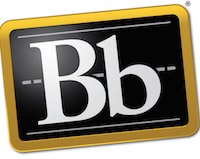Guide to Online Middle School

The growing popularity of online education goes beyond adult learners; according to reports, the number of middle school students enrolled in online classes increased by up to 80% from the 2009-10 school year to the 2013-14 school year. More parents are turning to online schools, homeschooling, or hybrid programs to provide a customizable, flexible, and self-guided education that meets the varying needs of their children.
Why Consider an Online Education
While online education is not for everyone, the range of options and programs available have proven to be highly beneficial for certain types of learners.
Blended or hybrid programs combine components of both online and face-to-face learning. These programs offer the best of both worlds, affording students the flexibility and autonomy of self-guided online study without forcing them to miss out on the social and collaborative learning atmosphere of the traditional classroom. This is beneficial for students who need to make up missed or failed classes or earn extra credit by enrolling in courses that aren’t offered at their school. Students who struggle socially may also find that online tutoring relieves some of their daily pressures and allows them to perform to their highest potential.
Virtual schools are programs in which students complete all of their coursework online. Students who travel frequently, either due to their parents’ occupation(s) or their own activities (such as athletics or entertainment), often find this style of learning particularly helpful. Web courses help them stay on track, allowing them to complete middle school in a timely manner and transition to a four-year high school seamlessly.
Reasons for Attending an Online School
Source: Connections Academy
Advanced Students
Studies have shown that advanced (or “gifted”) students thrive in an online learning environment. Middle schools across the country now offer courses that help above-average students earn credits required for high school education. Private online academies, meanwhile, have created comprehensive curricula designed to build skills and competencies for gifted preteens and teens.
In a QKED News article discussing online learning for gifted teens, one parent described the opportunity as being beneficial “because your age doesn’t matter as much as your interests and your ability […] Because it’s very difficult to, say, find a high school that would be willing to have a 10-year-old take an AP course”. Through online middle schools, parents can choose the courses best suited to their child’s level.
Students with Special Needs
For similar reasons, special needs middle school students may also benefit from online courses. Most web-based programs are structured for independent study, allowing learners to absorb information and complete assignments at their own pace. Some online middle schools also offer curricula specifically designed for students who struggle with reading, writing, math, or other core subjects; certified instructors are available to work directly with students and address individual concerns with each offered course.
| School Checklist |
|
|---|
Online education can serve students with a wide range of disabilities, such as autism, ADHD, and physically limiting conditions like multiple sclerosis.
At-Risk Students
At-risk students may likewise thrive in alternative online programs. Factors such as poor academic performance, low socioeconomic status, or a lack of positive role models at home may put a student at risk. Lack of academic encouragement is one of the primary reasons many young people drop out of school and enter the real world without the preparation they need to launch successful careers. In order to create the supportive environment these students need, online learning centers pair students with learning coaches to help them stay motivated in their course work.
Students in Overcrowded Schools
Schools have also started offering online courses to mitigate problems associated with high student-to-teacher ratios. Faced with overcrowding, Falcon School District 49 in Colorado Springs, Colorado launched the Falcon Virtual Academy with 59 of its students in 2010. By 2013, enrollment rose to 420 full-time students. Eventually, multiple district-wide online learning programs were set up to serve more than 15,000 students across the state. From 2011-2012, students in grades 6-8 showed marked improvement in reading, math, and writing scores for the Transitional Colorado Assessment Program test, outperforming the previous year.
Ultimately, the decision to enroll your child in a blended or fully online middle school program will depend on a number of factors, including the options available in your state or district, your child’s learning style, and your family’s lifestyle.
If your child is a gifted student, special needs learner, at risk of failing in school, or otherwise requires specialized course work, a good first step is to meet with his or her teachers and school counselors to determine which (if any) online program may be the most beneficial.
Evaluating Online Schools
It’s important to carefully research your options when choosing the best course of action for your child’s education. Each online program you consider, whether public or private, must be able to demonstrate that the level of education offered meets or exceeds a traditional school’s.
Online Middle School Accreditation
Accreditation has been considered the measuring stick for high-caliber education, but with the rapid rise of online learning centers, new processes for evaluating and accrediting these programs are still being established. Therefore, while hundreds of online U.S. schools offer K-12 programs at quality levels that are comparable or even superior to their brick-and-mortar counterparts, identifying the best programs can be tricky.
| Accreditation Checklist |
|
|---|
The U.S. Dept. of Education does not maintain a registry of all nationally recognized accreditation organizations for primary and secondary schools like they do with colleges and universities. That means for K-12 schools, accrediting bodies and their standards vary by state. They are also different for public and private schools, whether they’re offered online or not.
Some online schools will be accredited by one of the regional accreditation boards recognized by the U.S. Dept. of Education — but a lack of accreditation from one of these boards is not necessarily a bad sign. There are six of these boards, all of which are also recognized by the Council for Higher Education Accreditation (CHEA). Parents can be assured that online middle school programs accredited by these entities have been reviewed and meet established educational standards.
There are several other private, major accreditation bodies whose seals of approval are a trusted sign of legitimacy. Parents can research other quality-indicators like awards, endorsements, and additional accreditations on each school’s website.
Accrediting agencies conduct thorough evaluations so that you don’t have to; their approval (or lack thereof) should indicate whether or not a school is qualified to provide an outcome-driven, high-quality middle school education.
Transferring Credits
When evaluating any online school, it’s also important to consider whether the credits earned there will be transferrable to a traditional or other online school. Audit the school and its programs by the same criteria that formal accrediting agencies do. Make sure the school provides:
- Available study aids, archived course materials, and other supplemental resources to assist students in their course work.
- Easily accessible online help desk or call center with a support staff to answer questions and guide students and parents through the virtual learning experience.
| Evaluations Checklist |
|
|---|
In addition, check your state’s core public school standards to ensure that courses and services meet these standards and also prepare students for successfully completing the state’s standardized tests. Courses should be not only equivalent to those taught in public and accredited private schools, but also transferrable in the event an online student chooses to attend a different school.
Cost of an Online Education
The costs of attending an online middle school vary widely. As with traditional schools, online public programs are virtually free, whereas private programs have a designated tuition enrolled families must pay. Parents should anticipate some costs, however, for enrolling their students in either a full-time or part-time online middle school.
| Cost Checklist |
|
|---|
The average cost of full-time private school for secondary school students in the U.S. is estimated at $13,000 a year, although online private schools are generally less expensive than their traditional counterparts. Keep in mind that many web-based learning centers offer part-time middle school programs for free.
While there are no official tuition costs to attend a public school online, both private and public online programs will charge for supplementary courses and materials on a student-by-student basis. Many of these costs may be optional depending on the program. Here are some charges that could be included:
- Application and registration fees
- Textbooks and course materials (digital and otherwise)
- Computer and essential learning system software
- Materials required for specific core classes or electives (art projects, lab equipment, and calculators, for example)
- Travel expenses for field trips or extracurricular activities
Web-Based Tools and Interface
In a fully-online course or program, students interact almost exclusively with web-based applications and media. It’s no question that the usability and quality of these web platforms play a critical role in every online student’s success. That’s why it’s important to compare each school’s interface before committing to a program.
| Technology Checklist |
|
|---|
Since just about every K-12 school in the country now incorporates digital tools into the classroom, your middle schooler is probably more familiar with the kinds of multimedia they’ll be working with than you are. Still, virtual classrooms and content present an entirely different kind of learning experience. There are several learning management systems (LMS) used by online learning institutions, each geared toward complete online delivery and tracking of course materials. Most allow for customized pedagogy creation, live chat and sharing for students, and networking opportunities. Here are three of the most popular:
 | Edmondo is a free learning tool that offers personalized account set up and networking tools for students to easily collaborate and share work. |
|---|---|
 | Moodle is an open-source and global software originally created in Australia. It’s highly customizable and boasts the largest selection of activities. |
 | Blackboard is perhaps the most recognizable LMS and one of the first — it was founded in 1997. With a new K12 platform, Blackboard focuses on the mobile devices experience in addition to the features commonly offered on an LMS. |
You’ll also want to review the system requirements of an online program. The school’s site should have a dedicated page like this one. If you can’t find a clear list, first check the school’s FAQ page and then contact the staff directly.
| Faculty Checklist |
|
|---|
Many online schools, especially private ones, employ learning coaches to assist students and provide an extra source of support. Unlike tutors, mentorship programs, or other real-world options, access to virtual learning coaches is typically free-of-charge through online learning centers; if the school charges a fee, then the services of these individuals may be included in the tuition.
In order to assess the quality of a particular online school’s faculty and learning coaches, visit the school’s website to read more about the qualifications and methods of the teachers that would be working directly with your kids. All teachers should be certified, full-time educators who are trained specifically in facilitating a virtual classroom. Or, contact the school directly and ask about how their qualifying processes compare to your state standards for public and private middle school teachers.
The Online Learning Experience
Learning to collaborate with peers and teachers is one of the most important aspects of formal education, especially during the middle school years. The potential isolation of online learning is, of course, one of the major drawbacks. Parents often worry about their online students missing out on science labs, field trips, and other forms of experiential learning that make traditional school fun.
Networking and Social Opportunities
In order to provide online students with more offline experiences, many online middle schools will connect students to supplemental electives and extracurricular activities offered at local public and private schools. And since most online middle school programs are self-paced, online students may find they have more time to spend on the activities that interest them most.
| Faculty Checklist |
|
|---|
Examples like this one from a 7th grader at a K12 virtual school indicate that students structure their day with a combination of classes, labs, and extracurricular activities. Most virtual schools will offer some combination of social opportunities:
- Hands-on courses like music lessons, science labs, or art classes
- Meeting with faculty members, student tutors, or counselors
- Joining after-school athletic teams and clubs
- Going on field trips, to dances, athletic events, or other school-sponsored functions
Sample Schedule, 7th Grade Online Learner
| Time | Activity | Learning Focus |
|---|---|---|
| 9 a.m. | Morning online classes | Interactive, real-time classes with a teacher and peers |
| 12 p.m. | Lunch break | Time for a break to review morning learning or participate in a social club |
| 1:30 p.m. | Science lab | Hands-on learning with optional help from teachers |
| 2:15 p.m. | Afternoon break | Break time to rest and get fresh air |
| 2:45 p.m. | Afternoon classes | Independent work time on additional lessons and assignments |
| 4 p.m. | Extracurricular activity | After-school social activity to connect with local peers |
Source: Adapted from K12.com
Parents are encouraged to be present as “learning coaches” to connect with other students and families through social media, localized activity groups, and co-ops. While classmates and teachers may not surround e-students every day, many schools strive to create a supportive web community for all enrollees.
Additional Resources
General Resources
- International Association for K-12 Online Learning (iNACOL)
- iNACOL’s Publications and Reports
- Foundation for Excellence in Education’s “Digital Learning Now!” Report
- Education Advisory Board’s Online Education Strategy